Cloud Technologies in Digital Transformation: Maximizing Efficiency and Innovation
12/15/2023
By: Devessence Inc
Digital transformation is a complex process, and cloud adoption is a force driving businesses into the future. The numbers tell a compelling story about cloud investments: by 2025, according to Gartner, corporate IT spending on public cloud computing in key market segments will surpass traditional IT investments. Almost 66% of application software spending will be channelled into cloud technologies, up from 58% in 2022.
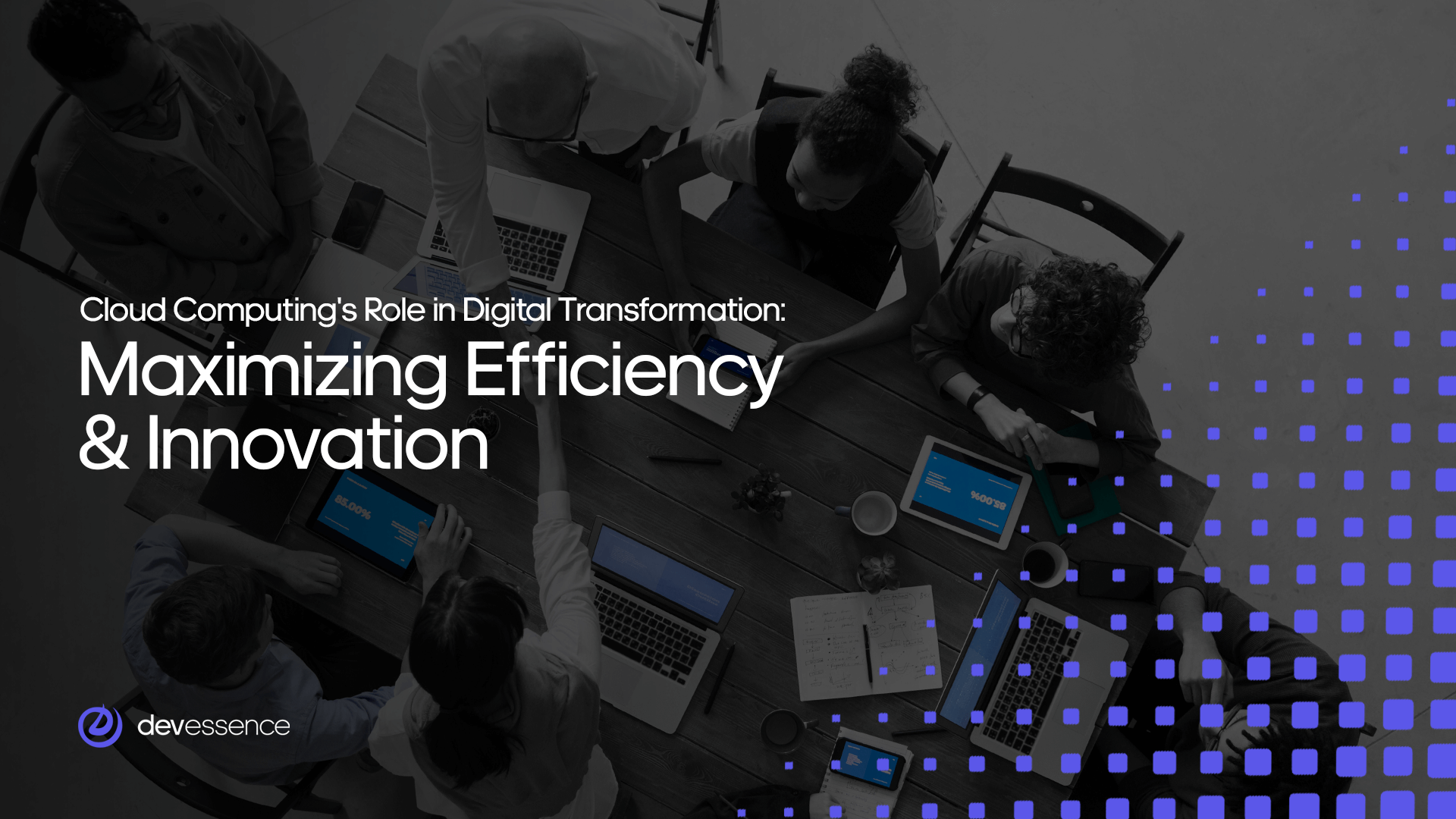
It is not just statistics; it is a groundswell of action. A Google survey highlights how fintech organizations embrace the role of cloud, with 41% planning to increase their investment in cloud services and products. This is complemented by 33% intending to transition from legacy enterprise solutions to cloud-based ones and another 32% preparing to migrate on-premises workloads to the cloud.
Why is this shift to cloud computing in digital transformation so significant? Beyond the numbers, it’s about the significant benefits of cloud adoption for digital transformation. From enhanced performance to unmatched agility and scalability, cloud computing digital transformation is reshaping the way businesses operate in the digital age.
In our new article, we will discuss the best practices to leverage the power of the cloud for your business's digital transformation. We will also explore its possibilities and benefits to find the best path forward.
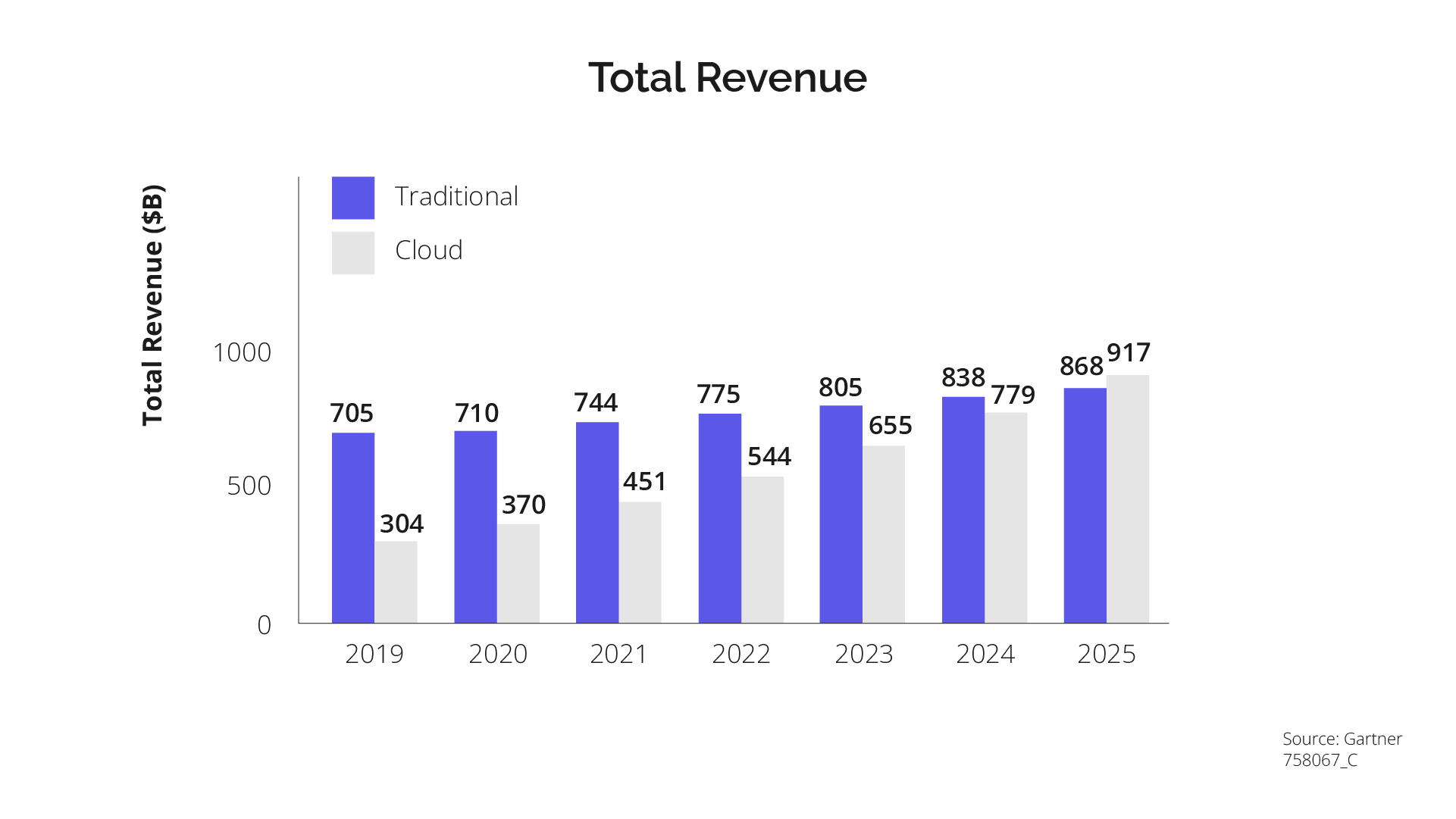
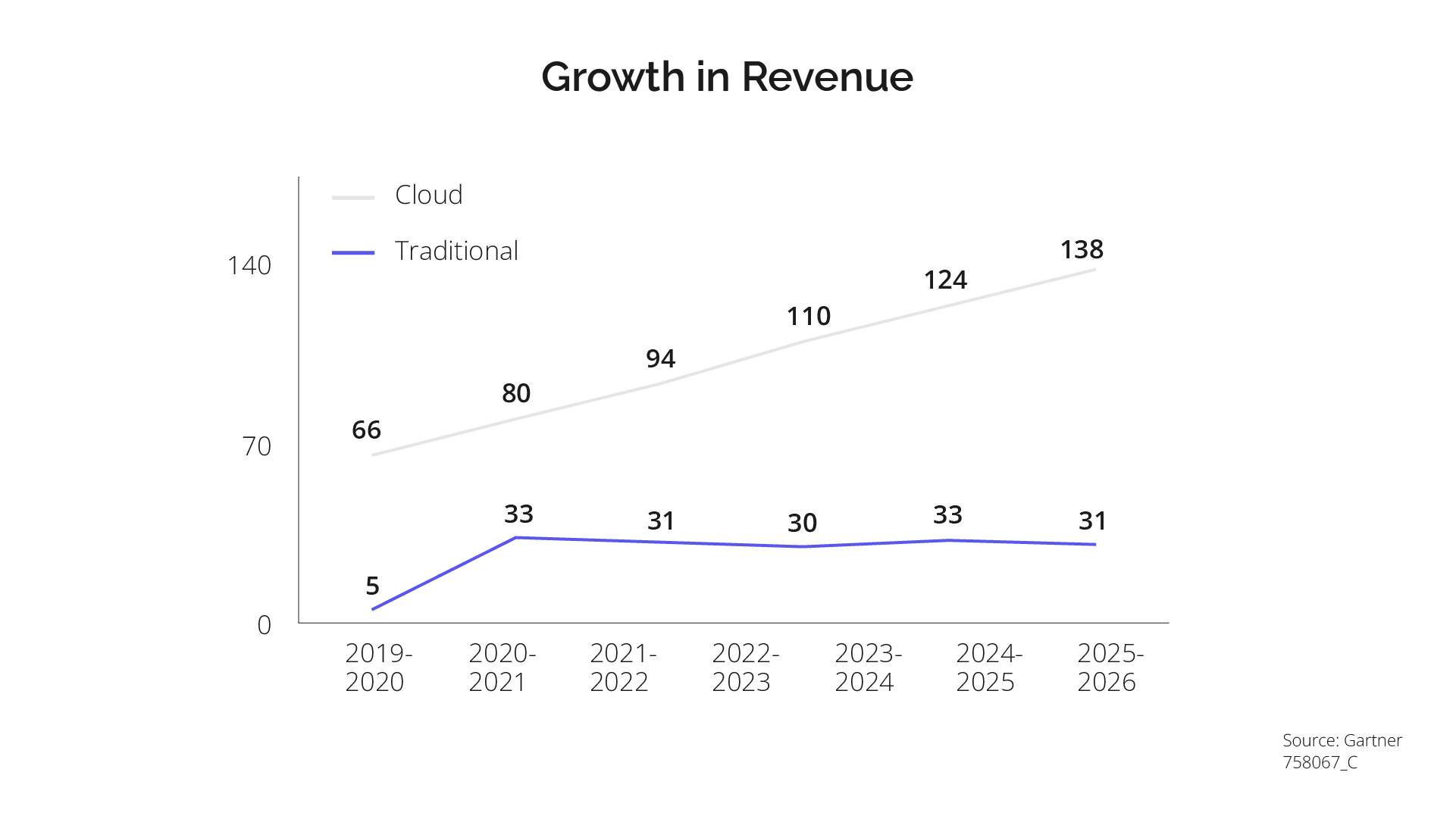
Benefits of Cloud Adoption for Digital Transformation
The primary and most significant benefit of cloud computing in digital transformation is that companies can automate and migrate systems to improve performance.
However, while performance is paramount, it is not the only advantage. There are many other ways the cloud is helping to reorient digital transformation services for businesses.

Agility and time to market
Cloud computing accelerate the development and deployment of digital solutions. With affordable cloud resources and smarter business analytics, software development and updates can be completed faster, helping organizations keep up with the pace of digital transformation.
According to Gartner’s Top Strategic Technology Trends study, by 2027, more than half of companies will use industry cloud platforms to push their business initiatives. It allows organizations to move from general to custom solutions developed according to the changing market demands, industry requirements, and unique needs of the company.
Scalability and flexibility
It is a well-known fact that cloud services can scale resources as needed. Such high flexibility allows businesses to adapt to changing demands quickly, ensuring they can handle increased workloads during peak hours and reduce costs during off-peak periods. It significantly simplifies the process of digital transformation.
Smooth adoption of innovations
Adopting the various cloud-based services provides access to advanced digital technologies such as artificial intelligence and machine learning, or Big Data analytics. The implementation process is quick and “painless,” especially if the digital transformation happens under the experienced consultants' guidance.
Organizations can use these innovations to gain a serious competitive advantage and improve security measures. Collectively, this streamlines the work of all departments and helps deliver the best digital experience to users.
Optimized resource allocation
Moving to the cloud reduces the need for significant upfront investments in physical hardware and data centers. Instead, you can pay for cloud services on a pay-as-you-go or subscription basis, resulting in predictable budget.
In addition, statistics also confirm that automated cloud cost optimization policies help to save time and reduce waste. 40% of technical and business professionals use them to terminate workloads during off-peak hours and to right-size underutilized installations. This helps to save time while constantly monitoring the cloud environment to eliminate waste.
Global reach
Cloud services are available from anywhere with an internet connection. Global reach makes it easier for organizations to expand operations, enter new markets, and serve customers worldwide.
In addition, cloud-based collaboration tools and platforms allow teams to work collaboratively regardless of their physical location. This is especially useful in remote and globally distributed work environments.
Data security, compliance, and business continuity
Reliable cloud providers invest a lot in security measures and compliance. They often have dedicated security teams, making it easier for customers to protect their data and comply with industry regulations.
It's also worth noting that cloud services usually include robust backup and disaster recovery solutions. This ensures security and data recovery in case of unexpected events, minimizing downtime and disruption to business operations.
To summarize, companies in any industry can significantly benefit from this approach to digital transformation. McKinsey predicts that in 2030, the total EBITDA of Fortune 500 companies will exceed $1 trillion.
Using Cloud Computing in Digital Transformation
Let’s go through the basic steps.
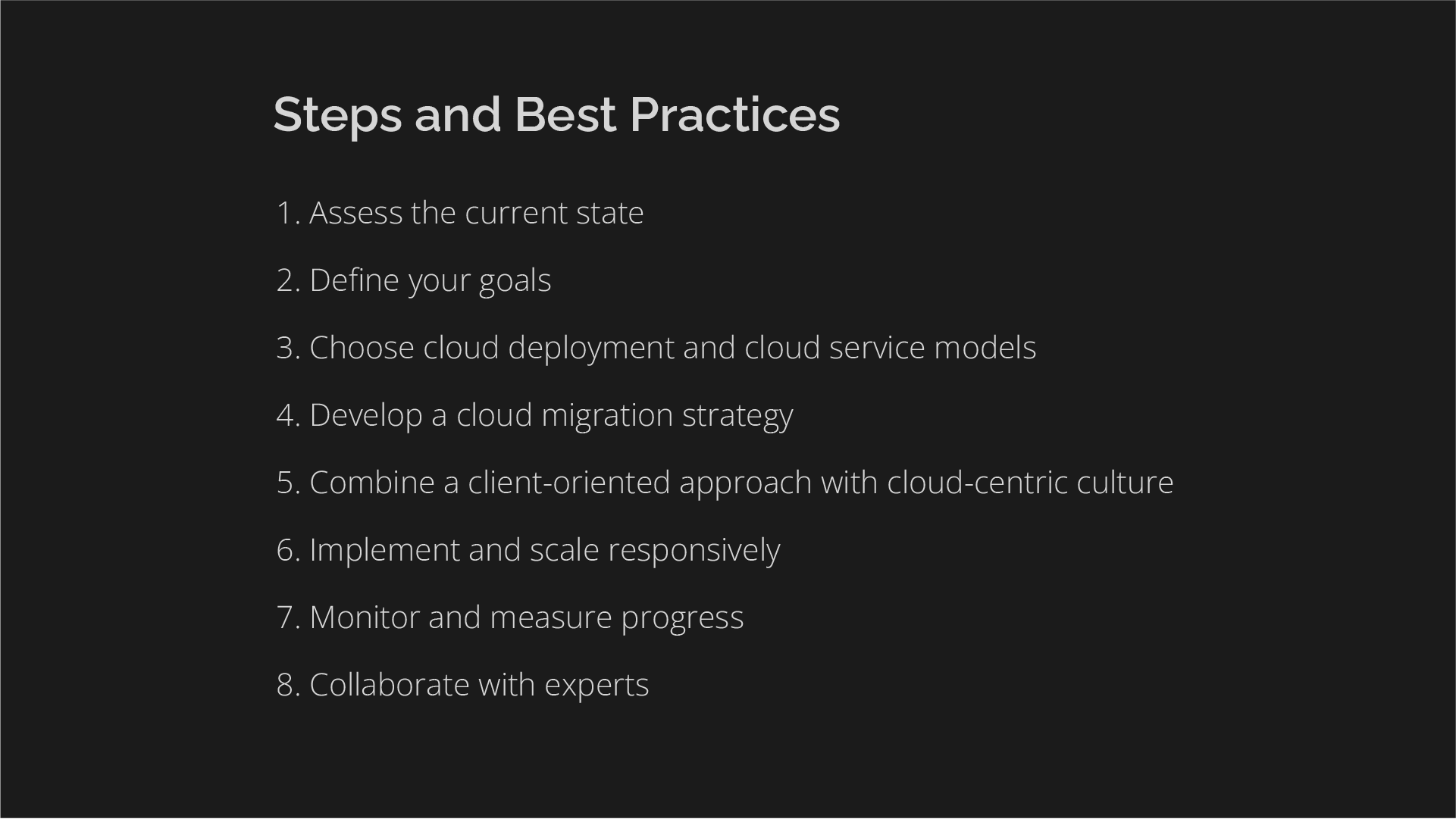
Define your digital transformation goals and assess the current state
It is a best practice to start by evaluating the current state of the company and clearly defining the goals of the digital transformation. Determine what you want to achieve using cloud technologies. It can be improving customer interaction, increasing operational efficiency, automating business processes, or adopting innovations.
Assessment of the existing IT infrastructure, applications, and data is also critical. Find specialists who can pinpoint your strengths and weaknesses, as well as any outdated systems that may need to be upgraded or replaced.
Cloud deployment models in digital transformation
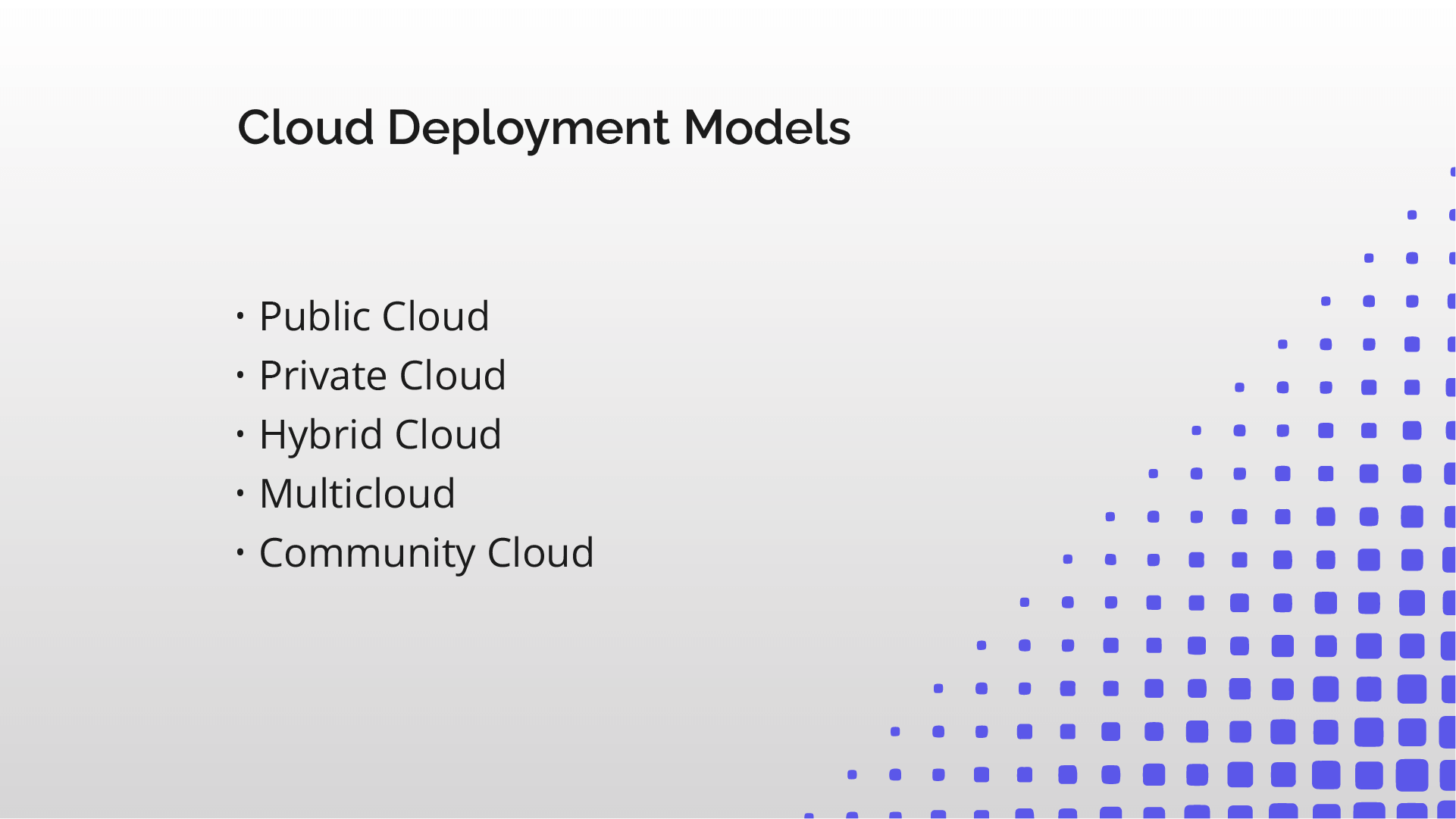
When adopting cloud technologies in the process of digital transformation, it is important to choose the right cloud deployment model. It defines how cloud computing resources and services are provided. Let’s take a look at the key concepts of cloud initiatives and models.
| Type | What is it? | Main Advantages in Digital Transformation | Considerations |
|---|---|---|---|
| Public Cloud | Public clouds are owned and run by third-party cloud service providers. They offer cloud computing resources, develop-and-deploy environments, storage, applications, etc., over the Internet. Examples: Microsoft Azure, Google Cloud, Amazon Web Services (AWS). |
– Cost-effectiveness. – No need for infrastructure management. |
Less control over security and data. |
| Private Cloud | Private clouds provide control, customization, and data security, often located on-premises or managed by a dedicated provider. Examples: HP Data Centers, Microsoft Azure Stack, Amazon VPC, Google Cloud Platform (GCP) VPC, and IBM Cloud VPC |
– Enhanced control and data security. – Greater customization. |
Like traditional IT, more expensive and resource-limited |
| Hybrid Cloud | Hybrid clouds blend private and public cloud components, enabling the sharing of data and applications. Examples: AWS Outposts, Azure Stack, Azure Arc, Microsoft Azure, VMware Solution |
– Scalability and cost-efficiency of public cloud while retaining sensitive data privately. – Ability to leverage the resources and services from different computing environments and choose which is the most optimal for the workloads. |
Requires effective management and integration. |
| Multicloud | Multicloud involves using services from multiple cloud providers (public, private, and hybrid clouds). Examples: using Google Cloud Platform (GCP) for development and testing and on Azure business analytics; using Azure in the US and Alibaba in Asia to eliminate latency |
– Reducing vendor lock-in. – Enhanced flexibility. – Leveraging the unique strengths of different providers. |
Increases complexity in management. |
| Community Cloud | Community clouds are shared cloud environments tailored for specific groups of organizations with similar requirements. Examples: Microsoft’s Azure Government Top Secret, IBM’s SoftLayer cloud |
Collaboration and shared resources while maintaining the benefits of cloud computing. | Requires clear and strict coordination among the community members. |
What option to choose?
The choice of deployment model is critical. Each option caters to different factors, such as data security, scalability, and control. Moreover, cost analysis, security and compliance considerations, and an evaluation of vendor lock-in risks are paramount. Ultimately, your cloud strategy should align with your long-term IT vision and growth plans, adapting to your organization's evolving needs and constraints.
So, start with understanding your specific requirements, ranging from data storage and processing to security and budget considerations. We will be happy to assist you with this. Our expertise and flexible boutique approach help our clients get their digital transformation off to a good start and ensure a smooth cloud adoption process. Just contact us now, and let’s discuss your unique requirements and needs!
Next, we can move to choosing the most suitable cloud service model.
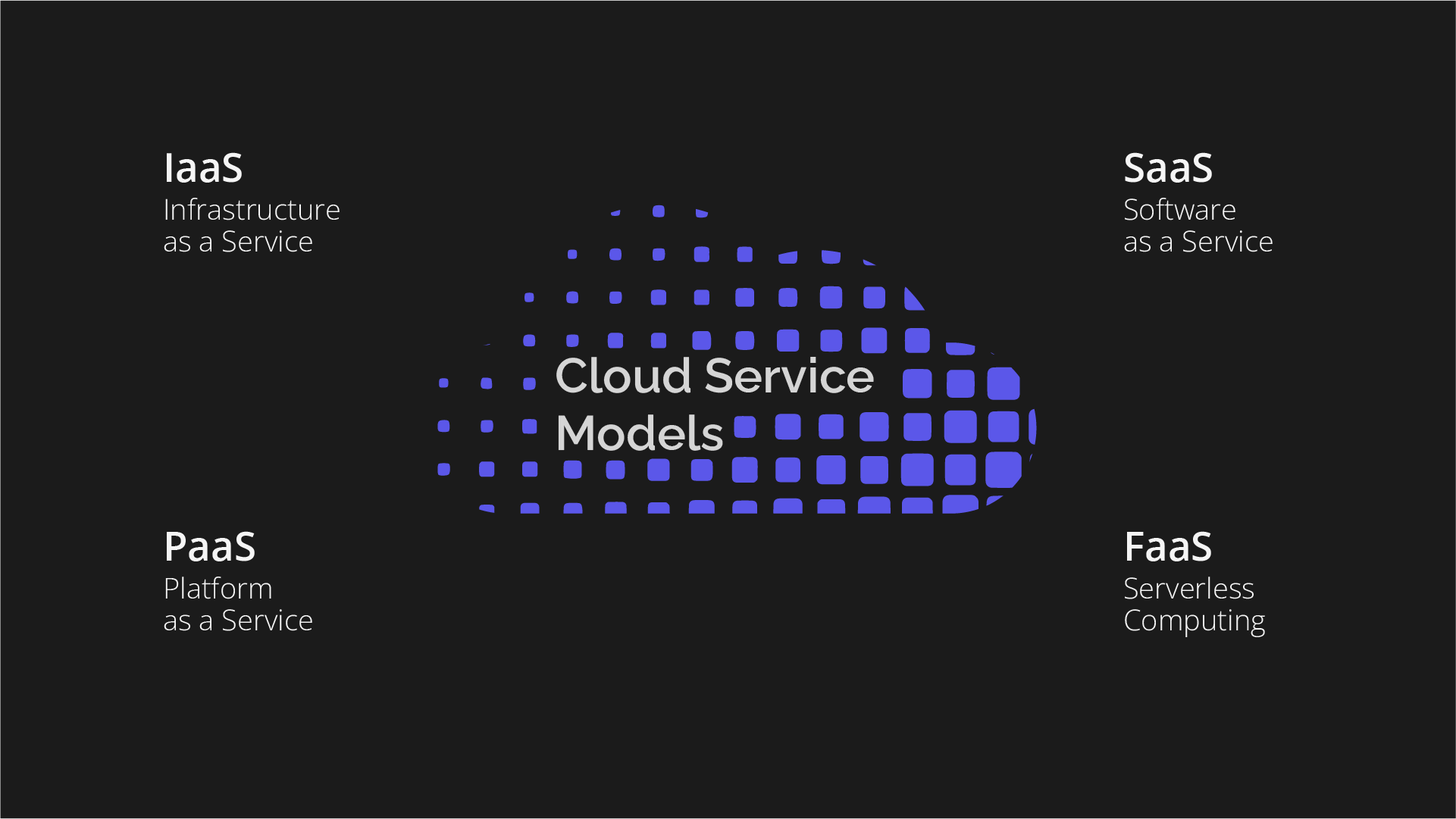
Types of cloud services in digital transformation: IaaS, PaaS, SaaS, serverless models
| Type | What is it? | Main Advantages in Digital Transformation | Considerations |
| Infrastructure as a Service (IaaS) | IaaS delivers on-demand infrastructure resources such as computing power, storage, networking, and virtualization. Here, the service provider owns and manages the hardware, while customers take charge of software components like operating systems, middleware, data, and applications. Examples: Microsoft Azure (managed infrastructure configurations that are suitable for various business needs), Amazon Web Services (EC2, RDS, S3), Google Compute Engine (virtual machines that run on Google’s infrastructure), IBM Cloud (are metal servers, virtual servers, etc.) |
– Control. IaaS offers you the most control. You can manage the operating system, applications, and data. – Scalability. Scale resources up or down according to your needs. – Cost efficiency. No need to invest in physical hardware or data centers. |
– Complexity. With great control comes more responsibilities. Managing software can be complex. – Cost transparency. Monitor usage to avoid unexpected costs. |
| Platform as a Service (PaaS) | PaaS takes cloud computing to the next level by providing a complete environment for developing, testing, delivering, and managing applications. Customers can focus on coding and application development without worrying about the underlying technology infrastructure. Examples: Microsoft Azure (deployment and development environment), Google App Engine (developing and hosting web apps in Google-managed data centers), Adobe Commerce, Kinsta. |
– Rapid development. PaaS accelerates application development and deployment. – Easy collaboration. Teams can collaborate easily within a shared environment. – Scalability. Purchase additional capacity as needed. |
– Lock-in risk. Customizing the environment too much can lead to vendor lock-in. – Limited control over infrastructure elements. |
| Software as a Service (SaaS) | SaaS delivers fully developed software applications as a service. Users access these applications over the internet via a subscription model. With SaaS, you don't need to manage infrastructure or application development. Examples: Microsoft Office 365 (subscription-based productivity suite that includes Word, Excel, PowerPoint, Outlook, etc), Google Workspace (includes applications such as Gmail, Google Drive, etc.), Salesforce (CRM software to manage sales, marketing efforts, and customer support operations) |
– Simplicity. Ready-to-use applications save time and effort. – Cost-efficiency. Minimal upfront costs and simple scalability. – Accessibility. Work from anywhere with an internet connection. |
– Customization limitations. SaaS applications might not fully align with unique requirements. – Trusting a third party with data security is a consideration. |
| Serverless Computing | Serverless, also known as Function as a Service (FaaS), is an innovative cloud service model. It allows you to build applications using event-triggered functions without the burden of managing infrastructure. Examples: Microsoft Azure Functions (allows running code in response to events, such as data changes in a database or the arrival of a new message in a queue), AWS Lambda. |
– Efficiency. Focus on writing code, not infrastructure management. – Scalability. Automatically scales with demand. – Cost savings. Pay only for actual usage. |
– Complexity of transition. Adapting existing applications to serverless may be complex. – Runtime limits. Serverless platforms have time and resource constraints. |
How to choose a suitable model?
Selecting the right cloud service model depends on your specific needs and objectives. IaaS is a perfect option if you require extensive control over your infrastructure and want to manage operating systems and applications. PaaS is good for organizations that want to accelerate application development and testing.
SaaS, on the other hand, is great for those seeking simplicity, easy accessibility, and cost efficiency. The serverless option is best suited for applications with sporadic workloads, as it provides efficiency and cost savings.
Develop a cloud migration strategy
A cloud migration strategy is essential to move existing workloads, applications, and data to the cloud. It helps to prioritize which systems must be migrated first and ensure minimal disruption to ongoing operations. Digital transformation requires support at all levels of the organization, so ensure that everyone understands the vision and objectives.
Client-oriented approach + cloud-centric culture
It is very important to encourage a digital business culture of innovation, collaboration, and continuous learning. Ensure that all digital transformation efforts are focused on creating features and processes that customers need. Do not forget that employees should be familiar with cloud technologies and be able to experiment and develop digital initiatives.
Also, use cloud-based data analytics and machine learning services to gain insights from data. This is your key to successful digital transformation.
Implement and scale responsively
Here are the things you should focus on:
- Strong security measures and compliance to protect your data and comply with industry regulations.
- Using cloud applications that fully utilize the capabilities of the cloud.
- Applying DevOps practices to automate development, testing, and deployment processes.
- Leverage cloud scalability to meet growth and sudden changes in demand.
- Design an infrastructure that can adapt without compromising performance and reliability.
It is important to monitor the performance of cloud computing resources and applications constantly. Also, the digital transformation process is more efficient if you monitor key performance indicators (KPIs). Review progress regularly, gather feedback, and adapt your digital transformation strategy as needed.
Collaborate with experts to stay on top of cloud innovations
Digital transformation is a continuous process, and the cloud is a fundamental element that can cause significant changes in the operational activities of your business. Find reliable partners – cloud experts or consulting firms with experience in digital transformation. This will help you quickly adopt innovations and stay abreast of digital transformation.
Digital capabilities can change rapidly as the market evolves. Weak IT infrastructure limits the data needed to perform complex analyses. Using cloud computing reduces or eliminates most of the legacy technology issues.
While the digital transformation journey is different for every business, following some best practices will ensure it runs smoothly. Find a trusted consultant to help assess your company's current state, create a digital transformation strategy to increase revenue or reduce costs, and help you find the best ways to adopt cloud solutions in the digital transformation process.
At Devessence, we have valuable expertise in working with cloud technologies in digital transformation. Our boutique approach to each client allows us to clearly define goals and needs and provide exactly the cloud computing services you need. We’d be happy to guide you in this journey with dedication and full attention. Let’s talk?